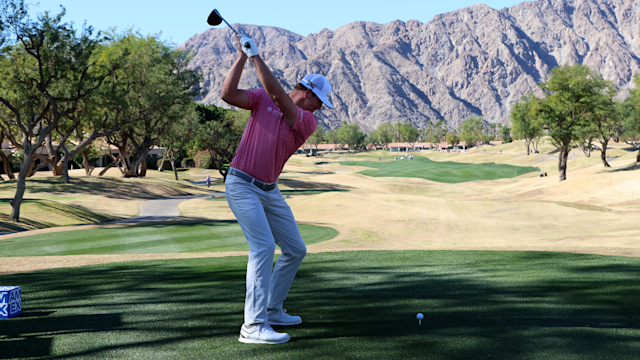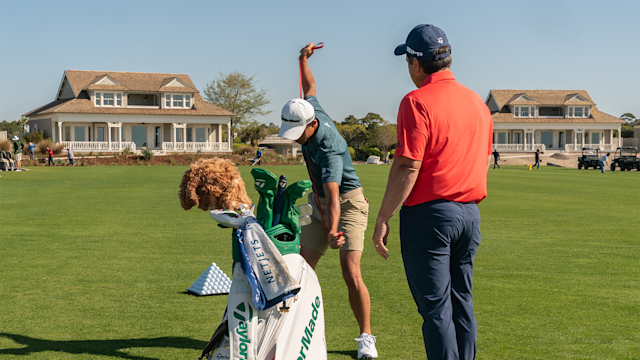quick coaching
Why an Initial Fitness Assessment is Important for Your Golf Game
By Vinnie Manginelli, PGA
Published on

Ana Belacstretches during the first round for the 2021 KPMG Women's Championship at the Atlanta Athletic Club on June 24, 2021 in Johns Creek, Georgia.Montana Pritchard/PGA of America
There was a time not too long ago when the terms “golf” and “fitness” were rarely seen in the same sentence. These days, the game of golf has become synonymous with words like strength, power, agility, mobility, balance and stamina. Golf has become a physical activity like never before.
Fitness trainers suggest golfers spend two or three days per week in the gym. Ken Shigley, a Titleist Performance Trainer in Atlanta says, “Without the fitness aspect of game improvement, golfers will always be playing catch-up with their more fitness-minded playing partners and opponents.
At West Coast Golf Academy in Oregon, Matt Preston, the facility’s Director of Performance, engages every new student in an initial fitness assessment. Not only are the student’s technical golf skills evaluated, but Preston puts his new clients through a series of physical tasks and exercises that provide valuable data about the student’s physical strengths, as well as their deficiencies, information he and his PGA Professional colleagues use to create an individualized development plan for each student.
Preston says that understanding his student’s goals is also very important in creating an agenda for future golf lessons and fitness sessions. Based on the information derived from the initial fitness assessment, your fitness trainer and PGA Professional will help you develop attainable and measurable goals that will be the framework for this new and exciting endeavor. Such early engagement also lays the foundation for long-term relationships between teachers and students.
It’s important to look at full body movement within an initial fitness assessment to isolate any recent injuries, ailments or limitations that the student faces in his or her mobility, often before they even hit a golf ball.
“Without an anatomical blueprint, there’s a very good chance that you may make an existing deficiency worse, enhancing the imbalance and creating a situation where the potential for injury is increased dramatically,” says Bob Forman, a Health & Fitness Director in North Carolina. He says to be leery of programs that do not offer this initial component.
Initial fitness assessments vary in length, generally between 45 minutes and two hours. Some, like Preston’s, incorporate golf instructors; while others are conducted solely by the fitness trainer and/or physical therapist, if one is on hand.
The following is a general list of factors that will be measured to ensure safe physical fitness and a focus on incorporating the body’s strengths into the golf swing:
- Posture
- Balance
- X-Factor - aka Disassociation (the separate movement of your upper and lower body during the golf swing)
- Shoulder rotation
- Mid-back range of motion
- Glute strength
- Core strength
- Internal hip rotation
- Hip flexor/hamstring/calf flexibility
PGA Golf Professionals, fitness trainers and physical therapists are increasing their knowledge through educational opportunities and certifications offered through organizations like the Titleist Performance Institute (TPI).
With industry leaders understanding the importance of golf fitness and the initial fitness assessment, their task is now to share that education and create awareness among their students and potential new clients.



